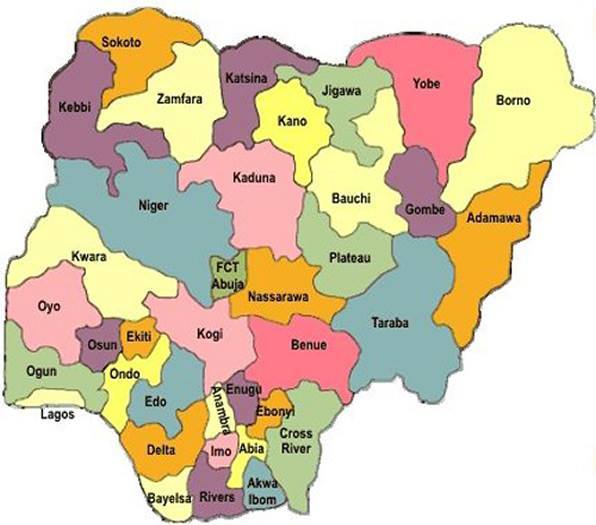Osogbo
Posted by OnlineNigeria.com on

Location of Osogbo in NigeriaOs?ogbo (or rarely, Oshogbo) is a city in Nigeria and is the capital of Osun State. It has a population of approximately 845,000. Most of the population are members of the Yoruba ethnic group.
History
Os?ogbo was founded around early 18th century by hunters from a nearby village which was suffering from famine. The hunters decided to move a few of their family members to the lower terraces of a nearby river, the river Osun. One of the hunters, Larooye, became the first Ataoja which is the royal title of the king of Osogbo, as one of the initial builders of the then small settlement, most of the initial population were concentrated around the palace of the Ataoja. After the fall of old Oyo, many people fleeing the Fulani Advancement settled at Osogbo, since then Osogbo has increased in population largely due migration from other Yoruba towns.
The main history of Oshogbo started when a businesswoman who has a foresight for a striving community decided to approach the then King of Ede for a piece of real estate along the the Oshun river bank. This woman then was granted about 20 acres of Ede's real estate to establish her domain.She then opened a frontier store to accommodate travellers who decided to rest and later follow on with their journey.Legend tells that, one night the spirit known as "OSHO" from the bushes along the river Oshun descended on this woman and proclaimed that she should start preparation for something big as the small frontier post is going to be one of the most developed city in the world.This is how the name "OSHOGBO" came into being as meaning the "spirit from the bushes".Since every Yoruba sprawling towns demands to have their own King, thefore the woman became the ruler of the town with the title as the "Businesswoman" of "Oshogbo" or the Ata Oja of Oshogbo.
Features and demographics
Os?ogbo lies on the railway from Lagos to Kano. It is known for the Oshogbo School of Art and the Oja Oba Market building, said to be the former Oba's palace.
Osogbo is the trade center for a farming region. Yams, cassava, grain, and tobacco are grown. Cotton is grown and used to weave cloth. It is also home to several hotels and a football stadium with a capacity of 10,000 and a second division professional league team. In 1988, about 27% of the population were engaged in farming as their primary occupation, 8% were traders and about 30% clerks and teachers.
Arts and industry
Temple of ??un in O?ogbo, Nigeria.Os?ogbo is the venue of the annual Osun-Osogbo festival along the River Osun. The festival is centered around the sacred grove of the river goddess ?sun,which is a UNESCO World Heritage Site.
Osogbo, sometimes called "Ilu Aro" (home of dyeing), is a major dyeing center. The traditional industry is one of the major industries of Osogbo. A number of industries also began to rise after independence, notably small scale establishments involved in textile, foam making, and pencils. Osogbo was made a major industrial development center by the government of Nigeria during the 1970s. Osogbo is also the childhood home of the world-famous dramatist Duro Ladipo and the Muslim scholar Sheikh Adelabu.
